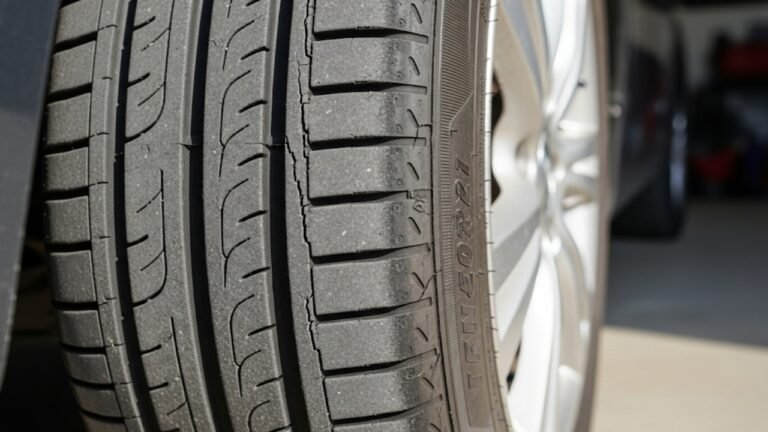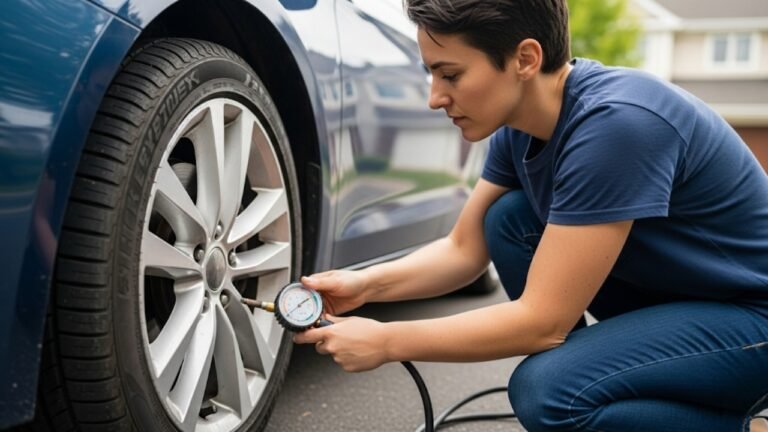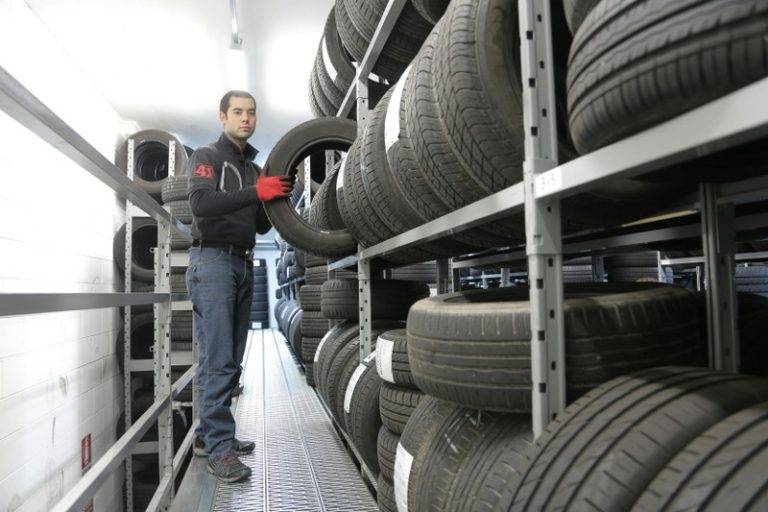Hidden Threat on Four Wheels: Dealing With a Slow Puncture Car Tyre
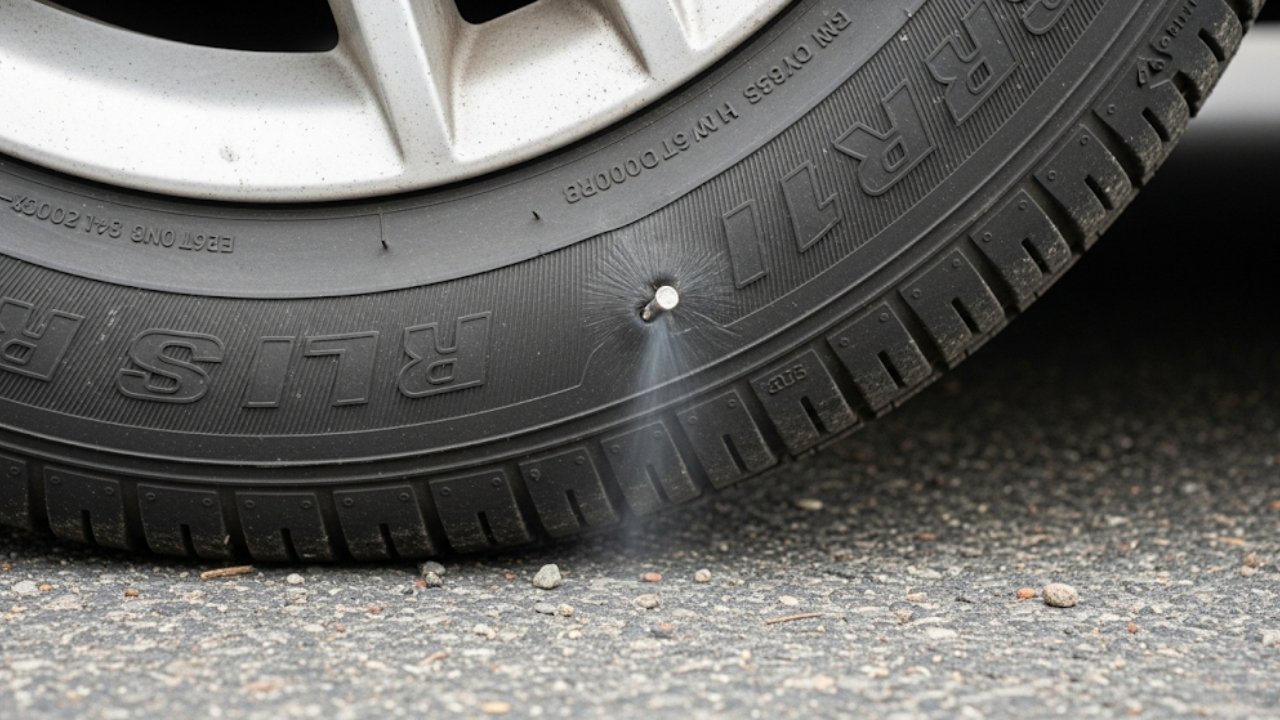
Let me tell you a story. One morning, I was cruising down the highway with a coffee in one hand and a podcast playing. Suddenly, my car began to drift slightly, almost like it had a mind of its own. No loud bang. No dramatic flat tire. Just a subtle wobble. I pulled over, checked my wheels, and sure enough—the rear left was sagging, not flat, but tired. That was my first encounter with a slow puncture car tyre, and trust me, it wasn’t the last.
This kind of tyre issue doesn’t scream for attention. It’s quiet, stealthy, and over time, it can lead to serious trouble. That’s why in this guide, we’ll walk through everything you need to know about spotting, handling, and preventing a slow puncture—before it ruins your day (or your rim).
What Is a Slow Puncture Car Tyre?
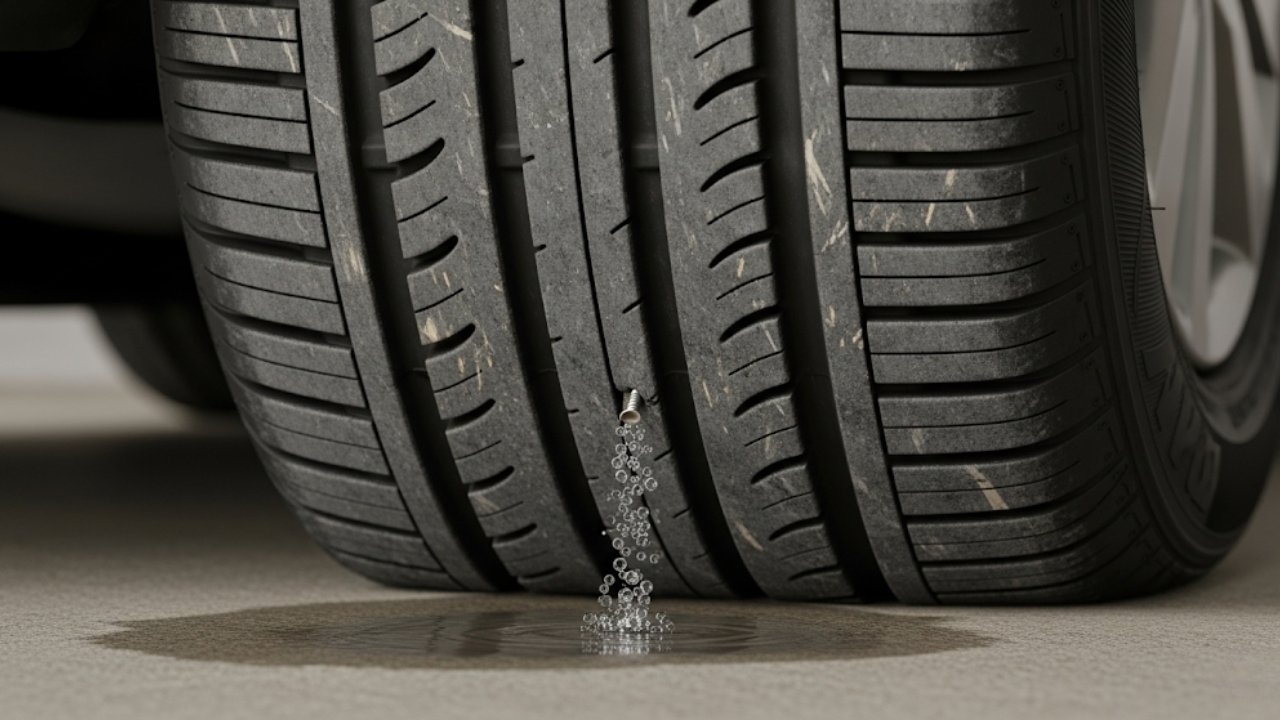
But don’t be fooled. A slow puncture car tyre can:
-
Affect fuel efficiency
-
Compromise handling and safety
-
Damage your tyre walls and rims
-
Cause uneven tread wear
Think of it as driving with a ticking time bomb under your vehicle—only slower.
Common Causes of a Slow Puncture
Let’s break down what usually causes these sneaky leaks. The problem might seem small, but it can come from different directions—literally.
1. Nails, Screws, or Sharp Objects
You might pick these up while parking near construction sites, abandoned lots, or gravel roads. They lodge themselves in the rubber and leak air very gradually.
2. Cracked or Damaged Valve Stems
That tiny valve where you inflate your tyre? If it’s old or damaged, it might not seal properly. You’ll lose pressure without ever seeing a hole.
3. Corroded or Bent Alloy Wheels
Especially if you live in a place with potholes or drive on rough roads. Damage to your rims can break the seal between tyre and wheel.
4. Bead Leaks
This is where the tyre meets the rim. Dirt, rust, or poor fitting can cause air to leak here over time.
5. Temperature Changes
Big drops in temperature shrink the air inside your tyres. This alone won’t puncture them, but it can amplify a minor leak.
Signs You Might Have a Slow Puncture Car Tyre
We all love a warning light, right? But a slow puncture is sneaky. Sometimes your tyre pressure monitoring system (TPMS) won’t even catch it until it’s too late.
Here are the subtle signs to watch for:
-
Vehicle pulling to one side
-
Tyre feels softer when touched
-
More road noise or vibration
-
TPMS alert keeps resetting
-
Drop in MPG (miles per gallon)
-
Slight wobble at high speeds
Tip: If you have to top up one tyre more often than the others, you’ve got a slow leak. Simple as that.
Is It Safe to Drive With a Slow Puncture?
You might think, “It’s holding air. I’ll fix it next week.” But driving with a slow puncture car tyre is like walking around in shoes with a hidden tear—they’ll break when you need them most.
Here’s why it’s risky:
-
Heat builds up inside underinflated tyres, increasing blowout risk.
-
Your braking distance increases, especially in rain.
-
It destroys your sidewalls—making repairs impossible.
-
You lose control during cornering or sudden stops.
So no, it’s not safe. If you suspect it, act fast.
How to Check for a Slow Puncture
Sometimes the leak is so small it’s invisible to the eye. But that doesn’t mean you can’t track it down. Here’s how:
️ Visual Inspection:
Look for embedded nails, cracks, or odd wear. Compare the tyre height visually to the others.
Soapy Water Trick:
Mix dish soap with water in a spray bottle. Spray it around the tyre’s surface, especially near the valve, tread, and rim. Bubbles? You found the leak.
⏱️ Pressure Test:
Use a digital tyre pressure gauge. Record the pressure of all four tyres. Come back 24 hours later. A loss of 1–2 psi is expected. More than that? Slow puncture.
Comparing a Slow Puncture to a Fast Puncture (Table)
| Feature | Slow Puncture Car Tyre | Fast Puncture / Blowout |
|---|---|---|
| Air Loss Speed | Gradual (hours to days) | Immediate |
| Visibility | Often hard to see | Obvious |
| Risk Level (Short Term) | Moderate | High |
| TPMS Alert | May delay | Instant |
| Handling Impact | Subtle at first | Severe immediately |
| Common Cause | Nails, valve, bead, rim damage | Sharp impact or burst |
Temporary Fixes for a Slow Puncture
Look, I get it. You’re late for work, your kid’s in the backseat, and your tyre’s crying air. You need something fast.
Here are a few temporary solutions:
-
Tyre Sealant (Slime)
Quick fix. You squeeze it in via the valve, and it plugs small holes from inside. But it’s only good for short drives—not a long-term fix. -
Portable Tyre Inflator
Inflate the tyre on the go to get you to the mechanic. Handy, especially if you travel alone a lot. -
Space Saver Spare
If the leak’s obvious and air is too low, swap it out with your spare.
But remember, these are band-aids. You need a proper tyre repair or replacement asap.
Can a Slow Puncture Be Repaired?
Yes—and no.
It depends on where the leak is and how long you’ve been driving on it. Here’s a quick rundown:
-
✅ Repairable:
-
Small puncture in central tread
-
No damage to sidewall
-
No tyre wall cracking
-
-
❌ Not Repairable:
-
Sidewall damage
-
Bead or rim-related leaks
-
Large gashes or exposed wires
-
A qualified tyre technician will remove the tyre, inspect it from the inside, and decide whether to patch or replace it.
Preventing a Slow Puncture Car Tyre
Prevention is always better than limping to the mechanic with a wheezing tyre.
Here’s how you keep those slow leaks away:
-
✅ Check tyre pressure every 2 weeks
-
✅ Avoid potholes, kerbs, and road debris
-
✅ Rotate your tyres every 6,000 miles
-
✅ Replace ageing tyres—even if the tread looks fine
-
✅ Clean your valve stems regularly
-
✅ Use tyre caps to keep dirt out
You don’t need to be a mechanic to stay ahead of tyre trouble. Just some basic awareness goes a long way.
When a Slow Puncture Ruined My Weekend: A Real-World Anecdote
Let me paint you a picture. It was a Saturday morning. The sky was clear, my playlist was on point, and I was headed out for a long-awaited family picnic about 90 km away. I’d packed sandwiches, drinks, and cricket bats for the kids. We didn’t even make it past the toll booth.
My steering started feeling… weird. Almost like it was drifting left, but not drastically. I kept driving. Five minutes later, that little tyre pressure warning light flashed on. I pulled over to check, and sure enough, the front left tyre looked lower than the rest. Not flat—just sad. Long story short? A slow puncture.
There was a tiny screw embedded right between the treads. I had no spare tyre (rookie mistake), and I had to call roadside assistance. By the time we got towed and the tyre was repaired, our picnic window was gone.
Lesson learned: never ignore a tyre acting “slightly off.”
How Mechanics Diagnose a Slow Puncture
When you bring your car to a tyre shop, mechanics don’t just spray some water and guess. They use a step-by-step inspection process:
-
Visual Check: They inspect for foreign objects or rim issues.
-
Pressure Loss Monitoring: Tyres are filled and left overnight in a controlled environment.
-
Water Tank Submersion: Tyre is fully submerged in a tank to detect bubbling air.
-
Valve Testing: They test the stem and core using a special tool.
-
Bead Seating Check: They inspect the inner edge where tyre meets rim for leakage.
-
Internal Inspection: If needed, they remove the tyre to look at the inside walls.
If your slow puncture car tyre is fixable, they’ll plug or patch it. If not? You’re buying a new one.
Tools That Can Help You Stay Ahead
In today’s digital world, we’ve got gadgets that go beyond guesswork. Here’s what can help you detect or monitor slow tyre punctures:
TPMS Apps & Sensors:
Installable tyre pressure monitors that sync with your phone in real time.
Digital Pressure Gauges:
More accurate than the traditional stick versions. Use it every week.
Portable Air Compressors:
For quick inflation at home or on the road—great in emergencies.
Tyre Sealant Kits:
These aren’t just for temporary fixes. Some newer versions seal minor leaks while driving, automatically.
All of these are small investments, but they save you big headaches.
Cultural Habits Around Tyre Maintenance: Why We Often Ignore It
Let’s be honest—tyres are boring. We obsess over mileage, fuel efficiency, infotainment systems, and even paint polish, but tyres? They’re often neglected until they scream for attention.
In many cultures, especially where secondhand cars dominate (like in parts of Asia, Africa, or South America), people often delay tyre repairs because:
-
Mechanics aren’t trusted or are too expensive
-
Lack of access to proper tyre tools
-
Fear of being overcharged
-
Limited awareness about tyre pressure checks
But think about it: your entire car rides on four patches of rubber, each no bigger than a handprint. Why would you ignore that?
Bullet Recap: Key Takeaways for Busy Drivers
Here’s a quick-hit summary for the impatient driver in all of us:
-
A slow puncture car tyre is a gradual air leak—not always easy to spot.
-
Causes include sharp objects, valve issues, rim damage, and poor seals.
-
Signs? Car pulling to one side, TPMS light blinking, tyre looking “low.”
-
Driving on it risks blowouts, sidewall damage, and accidents.
-
DIY checks include visual inspections, soapy water, and pressure testing.
-
Mechanics can seal, plug, or patch slow punctures—depending on damage.
-
Prevention = Regular pressure checks + avoiding debris + using quality tyres.
-
Use TPMS apps, portable inflators, and gauges to stay safe.
Frequently Asked Questions (FAQs)
1. How long can I drive with a slow puncture car tyre?
Not long. It depends on how fast the air is leaking, but you shouldn’t push more than a few kilometers. Get it checked immediately.
2. Can tyre sealant fix a slow puncture permanently?
No. It’s only a short-term solution. Sealant might help you get to a garage, but it’s not a substitute for proper repair.
3. Do run-flat tyres get slow punctures too?
Yes, they can. But run-flats allow you to drive short distances (around 80 km) even with low pressure, so you get more time to react.
4. How much does it cost to repair a slow puncture?
It varies by country. Typically, it ranges from $15 to $50 depending on whether the tyre needs a plug, patch, or full replacement.
5. Is a slow puncture an MOT failure (UK-specific)?
Yes. If the tyre is underinflated or leaking air, it can result in an MOT failure. It’s considered a safety risk.
6. Can I use tyre inflator foam for all types of leaks?
No. It’s ineffective for sidewall damage or large holes. It works best on small tread-area leaks.
7. Why is the same tyre always losing pressure?
It’s likely a slow puncture, faulty valve stem, or bead/rim leak. Consistent loss in one tyre = definite issue.
8. Should I replace all tyres if one has a slow puncture?
Not always. If the rest are in good shape, replace just the faulty one. But with all-wheel-drive cars, tyre mismatch can cause drivetrain issues.
Final Thoughts: Don’t Let a Small Leak Steal Big Moments
Your car’s tyres are its foundation—quiet, reliable, but often ignored. A slow puncture car tyre may not announce itself like a blowout, but it’s just as dangerous in the long run. Catching it early means saving your fuel, saving your weekend plans, and possibly even saving your life.
So next time you feel a subtle pull or see your tyre looking even slightly deflated, don’t brush it off. Pull over. Check the pressure. Use your tools. Listen to that sixth sense every experienced driver has.
Because when it comes to tyres, silence isn’t golden—it’s suspicious.

